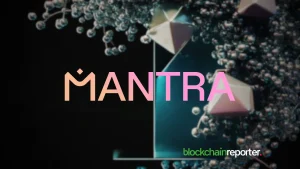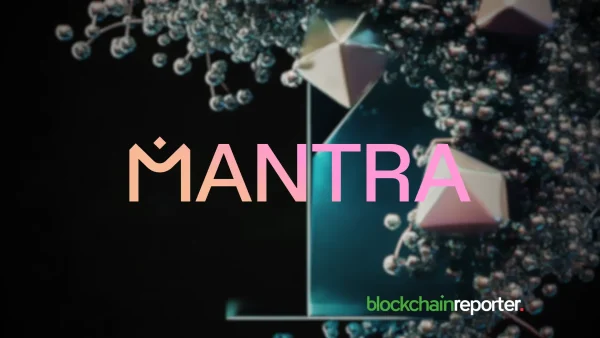
In the dynamic realm of messaging apps, Nicegram has emerged as a pioneer in navigating the intricate intersection of Web3 technology, community engagement, and the crypto-native landscape. In this exclusive interview, we sit down with Sergey Sheleg, Chief Product Officer of Nicegram, to unravel the transformative journey of this innovative platform – from its humble origins as a Telegram client app to its current trajectory as a Web3 focused SocialFi platform.
Before joining Nicegram, Sergey played a key role in enhancing the popular consumer app Ultimate Guitar, leveraging AI to transform various aspects of the learning and playing experience for its 350 million users. With a solid foundation in product management, user experience, and a focus on Web3 functionalities, Sergey has assumed senior leadership positions in several successful projects.
In this exploration, Sergey sheds light on Nicegram’s growth phases, the emergence of SocialFi, his vision for the Nicegram Hub, and more. Join us as we explore Nicegram’s targeted community engagement strategies, its role in empowering the creator economy through crypto-first features, and the potential impact of its transformation on the broader messaging app industry.
Q1. To kick things off, Sergey, could you provide an overview of your journey with Nicegram and your role in steering the company’s growth?
Nicegram‘s journey began in 2019, catalyzed by Pavel Durov’s decision to open Telegram’s API for custom clients. Originally a pet project, it quickly demonstrated strong growth metrics. In 2021, we recognized the potential to evolve Nicegram into a ‘Telegram for Business’ platform, mirroring WhatsApp’s business communication model. This strategic shift was aimed at filling a specific market demand for business-focused messaging within the Telegram ecosystem.
As we continued to develop Nicegram, our vision expanded. We are currently in the process of transitioning Nicegram into a Web3 platform. This evolution reflects our commitment to aligning with the latest technological advancements and responding to the emerging needs of our users. The transformation from a pet project to a business messaging app, and now to a Web3 platform, showcases our adaptability and foresight in the rapidly evolving digital communication landscape.
With our extensive experience in app development, we quickly adapted and grew the project, focusing on organic growth through word-of-mouth and community engagement. Since then, Nicegram has transformed significantly, and its user base has expanded sixfold. Remarkably, we achieved this growth without spending a single dollar on advertising, confirming the soundness of our strategic direction and the power of community-driven growth.
Q2. Nicegram has achieved a significant milestone of 25 million users in under two years. Could you walk us through the various growth phases and key product milestones that contributed to this remarkable user base expansion?
A pivotal strategy for Nicegram as a Telegram client app was to preserve the original UX of Telegram. We are big fans of Telegram and appreciate the user experience it offers, so we decided to integrate our features in a way that maintains everything users are accustomed to in Telegram, while adding an additional layer of functionality on top. Internally, we refer to this as ‘Layer 2 for Telegram’, drawing an analogy to crypto technology.
This approach significantly lowered the learning curve and barrier to entry. Telegram users looking to leverage Nicegram’s capabilities didn’t face any difficulties switching from the official client. In fact, most of our users, including ourselves, use both Nicegram and Telegram simultaneously.
On the other hand, our focus on user experience and community development has enabled us to generate a steady flow of user-generated content. Our users share life hacks and talk about Nicegram’s features like AI Chatbots on social media, YouTube, and other media platforms. This organic promotion and engagement have been instrumental in our rapid growth and reaching the milestone of 25 million users.
Q3. What are your thoughts on the emergence of SocialFi and how does Nicegram plan to embrace this trend in transforming from a Telegram client app to a Web3 focused SocialFi platform?
SocialFi epitomizes the seamless integration of cryptocurrency into social networks. At Nicegram, we’ve been actively exploring how to maximize this integration’s impact on our platform and deliver the greatest value to our users. We believe that SocialFi is the most fitting and forward-looking direction for the evolution of a messaging app, a belief supported by our internal surveys indicating that about 70% of Nicegram users are already engaged with cryptocurrency or decentralized/crypto services.
In the realm of Web3, we’re developing a reputation system for Telegram communities and individual users, further enhancing the functionality of our platform. This development aligns perfectly with the preferences and needs of our user base. Moreover, we’re excited to introduce the Nicegram Hub – a ‘Google for Telegram’. This feature will serve as a comprehensive directory for Telegram communities, simplifying the search and discovery of groups and channels, thus positioning Nicegram at the cutting edge of messaging, social networking, and blockchain technology.
Q4. As a Telegram client app, what targeted community engagement strategies have Nicegram deployed to attract and retain users, especially considering the competition in the messaging app landscape?
As mentioned earlier, our unique approach lies in preserving the full functionality and user experience of the official Telegram client while expanding capabilities through a ‘Layer 2’. Unlike our competitors who often significantly alter the client, making users learn a new application, we chose to avoid this. We maintain the familiar Telegram experience and add value-added features on top of it.
Another key aspect is our focus not just on the quantity of features, but on their quality and value. We also actively support our community, provide training, and assist with any issues. For instance, receiving a response from Telegram’s official support can be challenging, but we ensure our users don’t face such issues.
We keep an eye on all trends in the messaging app market and emphasize quality, as evidenced by our app’s rating in the App Store. One of our cool additions has been an AI assistant integrated directly into the chat. This feature aids both regular users and community owners in speeding up their routine and optimizing work processes.
Q5. With a focus on the future of Web3 community engagement on Messenger Apps like Nicegram, how do you envision the role of community engagement evolving in the context of Web3 and decentralized communities?
Community engagement is crucial not only in messaging apps like Nicegram but also across various domains, playing a central role in the development of crypto projects. Recognizing this, we’re creating a specialized hub within Nicegram for Telegram communities, designed to meet the specific needs of Web3 and decentralized communities.
This hub, envisioned as the ‘Google for Telegram,’ will offer a comprehensive suite of tools and features to empower community managers and founders. It will facilitate effective engagement, interaction management, and the building of robust, dynamic communities within the Web3 space. By addressing the unique challenges and opportunities of decentralized communities, this hub aims to streamline community engagement processes, enhancing the effectiveness and overall success of Web3 projects.
Q6. In what ways do you believe Web3 companies can benefit from a community-focused messenger interface, such as Nicegram? Are there specific advantages or opportunities that stand out in the context of a decentralized and community-driven ecosystem?
In the Web3 space, companies face several challenges around adoption and education in the market. A community-focused messenger interface like Nicegram can be most beneficial in overcoming this issue. Our approach enables product owners and community managers to access an array of tools that encompass AI, analytics, advertising, monetization, engaging mechanics, educational content, gamification, and blockchain integration, to hit their key user engagement objectives.
The key advantage here is the integration of these tools into a daily-use messenger app. This approach allows for continuous education and engagement within a familiar environment, making the complexities of Web3 more accessible and understandable to the average user. It’s not just about managing a community; it’s about growing it, nurturing it, and maintaining interest in decentralized projects.
By embedding educational and engaging elements directly into the messenger platform, we can effectively address the knowledge gap in Web3, simplifying the learning curve for new users and fostering a deeper, sustained interest in the decentralized ecosystem. This strategy is pivotal for driving user adoption and supporting the growth of Web3 communities, making the technology more approachable and relevant to a broader audience.
Q7. As AI becomes increasingly integral, how does Nicegram navigate the impact of AI on its crypto-native users? Are there specific AI-embedded features that have played a significant role in the platform’s success?
Nicegram’s AI assistant has already proven successful, especially with Telegram community administrators, by streamlining content management within the messenger. Going forward, we’re expanding AI features to include personalized characters like MindPal for emotional queries, assistants for movie selections, virtual chefs, and more, catering to diverse user needs.
We are also focusing on developing tools for growth, monetization, and promotion of communities. The potential of AI in this realm is immense, and we are committed to leveraging this technology to its fullest. Our users can expect to see more AI integrations and optimizations in Nicegram in the near future. These advancements will not only enhance the user experience but also provide powerful tools for community growth and engagement, further establishing Nicegram as a leading platform in the intersection of messaging and Web3.
Q8. Nicegram aims to empower the creator economy through token-gated access, multi-chain wallets, and other crypto-first features. Can you elaborate on how these features contribute to supporting and enhancing the creator community within the platform?
In Telegram communities, attracting new audiences can be challenging due to algorithms and the prevalence of bots, which also complicates monetization as creators often have to prove their channel’s quality to advertisers through various means. Nicegram addresses these challenges by introducing features such as community reputation systems, token-gated access, and other mechanisms that enable creators to focus more on what they do best, leaving the rest to Nicegram.
A key initiative is the creation of a hub for Telegram communities, functioning like a launchpad or Kickstarter for communities. This hub will provide all the necessary tools for growth and development in one place. From AI to promotional tools, we aim to offer a comprehensive suite of features that support creators in building, managing, and monetizing their communities more effectively.
This approach not only simplifies the process for creators but also enhances the overall quality and engagement within the community. By reducing the barriers to growth and monetization, Nicegram is set to play a pivotal role in empowering the creator economy within the Telegram ecosystem.
Q9. Could you share your thoughts on the potential impact of Nicegram’s transformation on the broader messaging app industry and how it might influence the development and direction of similar platforms in the future?
Nicegram’s transformation into a SocialFi platform has the potential to significantly impact the messaging app industry in several ways. First and foremost, it showcases the power of integrating Web3 and cryptocurrency features into messaging apps, highlighting the growing demand for decentralized and crypto-native experiences.
The success of Nicegram’s approach, preserving the familiar Telegram UX while adding crypto-first features, could serve as a model for other messaging apps looking to tap into the Web3 space. It demonstrates that it’s possible to bridge the gap between traditional messaging and blockchain technology, making it more accessible to mainstream users.
Furthermore, Nicegram’s focus on empowering the creator economy within its platform could inspire similar initiatives in the messaging app industry. As the creator economy continues to grow, messaging apps that offer tools and features to support content creators and community builders will have a competitive edge.
In essence, Nicegram’s transformation could encourage innovation and experimentation within the messaging app industry, pushing more platforms to explore the possibilities of Web3, decentralized communities, and crypto-native features to stay relevant and competitive in an evolving landscape.
Q10. As we wrap up our discussion, Sergey, looking ahead, what excites you the most about the future of Nicegram in the context of SocialFi, and what key takeaways would you like our audience to have about the intersection of messaging apps, Web3, and community engagement?
What excites me the most about the future of Nicegram in the context of SocialFi is the potential to transform the way people engage with messaging apps, communities, and cryptocurrencies. We are at the forefront of a transformative era where blockchain technology and decentralized communities are reshaping the digital landscape.
Nicegram’s role in this evolution is to provide a seamless and user-friendly bridge between the traditional messaging world and the exciting possibilities of Web3. We aim to empower individuals, creators, and businesses to leverage the benefits of blockchain technology within a familiar and accessible environment.
There are some key takeaways which I’d like our audience to have about the intersection of messaging apps, Web3, and community engagement:
- Web3 Integration: The integration of blockchain technology and cryptocurrency into messaging apps is not just a trend; it’s a fundamental shift that brings new opportunities for users and creators.
- Community-Centric: Messaging apps are becoming more than just communication tools; they are evolving into hubs for communities, content creators, and businesses to connect, collaborate, and thrive.
- Accessibility: Making Web3 and crypto-native features accessible to mainstream users is crucial for adoption. Preserving a familiar user experience while adding crypto functionality can lower the entry barriers.
- Empowering Creators: Providing tools and features that empower content creators and community builders is a driving force in the success of modern messaging apps. The creator economy is here to stay.
- Innovation Matters: Nicegram’s journey showcases the importance of innovation in the messaging app industry. Embracing new technologies and approaches can set platforms apart and drive growth.
To sum it up, the future of messaging apps is becoming increasingly intertwined with the Web3 ecosystem. Nicegram’s transformation and focus on community engagement, Web3 integration, and empowering creators are aligned with the exciting possibilities and potential for positive change in this evolving landscape.
Interview Summary
As we conclude our exclusive interview with Sergey Sheleg, the narrative unfolds a compelling journey from Nicegram’s inception as a Telegram client app to its current position as a Web3 focused SocialFi platform. Sergey’s insights offer a panoramic view of Nicegram’s growth, strategies, and vision for the future.
Nicegram’s commitment to preserving the user experience while innovating has been the linchpin of its success. The transition from a pet project to a business messaging app and, subsequently, to a Web3 platform underscores the platform’s adaptability and foresight in an ever-evolving digital landscape.
Sergey’s narrative explores key milestones, the emergence of SocialFi, and the groundbreaking concept of the Nicegram Hub – a ‘Google for Telegram.’ This hub promises to redefine messaging, social networking, and blockchain technology, positioning Nicegram at the forefront of innovation.
As the discussion draws to a close, Sergey expresses excitement about Nicegram’s role in transforming the way people engage with messaging apps, communities, and cryptocurrencies. The key takeaways emphasize the fundamental shift brought by Web3 integration, the evolving role of messaging apps as community hubs, and the importance of empowering creators.
In essence, Nicegram’s journey unfolds as a beacon of innovation, exemplifying the potential for positive change in the messaging app industry. The fusion of messaging apps, Web3, and community engagement is not just a trend but a transformative force, and Nicegram stands poised at the forefront of this digital evolution.









